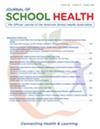Mental health care is critical to improving mental health but factors associated with student utilization are poorly understood.
Data were from high school students (N = 2933; mean age = 15.7 ± .6) enrolled in a California cohort. We examined associations of sociodemographic factors, substance use, and mental health symptoms at baseline (Fall 2021) with mental health care at follow-up (Spring 2022).
At follow-up, 7.7% of students reported out-of-school therapy, and 16.0% reported in-school counseling. Generally, therapy was more common for female and gender minority (vs male), some sexual minority youth (vs heterosexual), black, non-Hispanic white, and multi-ethnic (vs Asian), and English language speakers. Higher socioeconomic status was associated with greater use of out-of-school therapy, but not in-school counseling. Students with clinical levels of mental health symptoms, or alcohol or e-cigarette use had greater odds of mental health care (ORs = 1.42-2.61;ps <.05), though utilization was less than 20% for out-of-school therapy and less than 30% for in-school counseling among these students.
Mental health care is underutilized, and disproportionately used by certain student sub-groups. Findings indicate a need to increase mental health care utilization in- and out-of-school.


